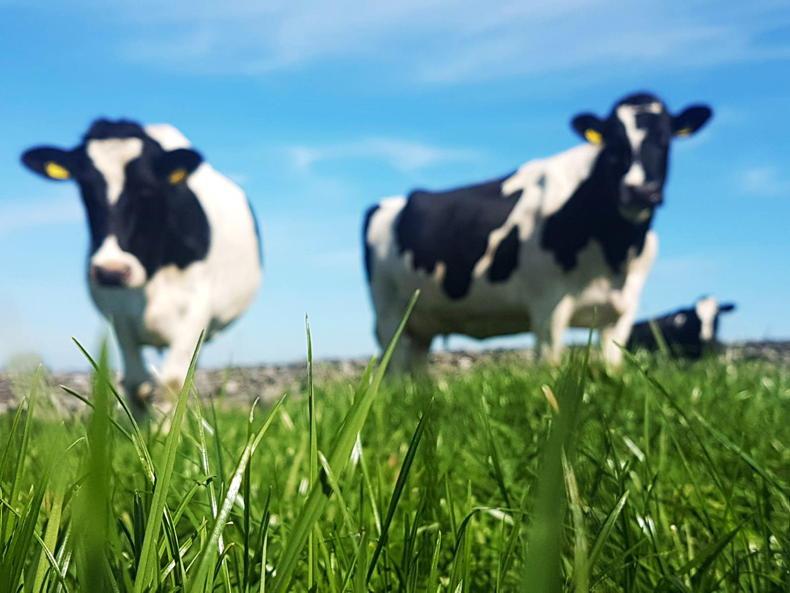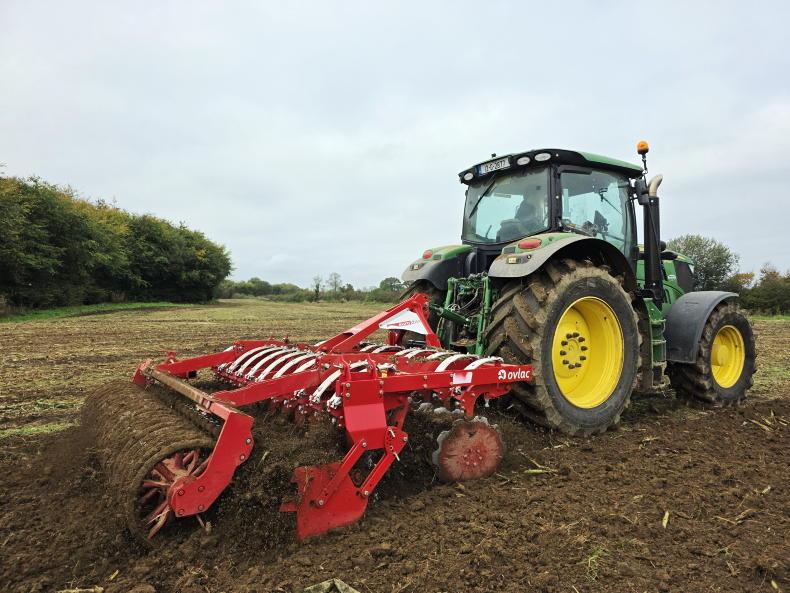While perennial ryegrass remains the main grass species of choice, as a rule of thumb once it falls below 40% in the sward it is advisable to reseed. Old pastures are considerably less productive and on average produce up to 3t less dry matter per hectare in the year relative to a new pasture.
Reseeding is one of the most cost-effective on-farm investments, with a return on investment from the reseeded paddocks in just over two years, according to Teagasc. Like any investment, grassland reseeding should be carefully planned. To help with this, we address seven most frequently asked questions by Irish farmers on autumn reseeding.
1. When is the best time to reseed?
Ideally you should aim to reseed anytime from June to the end of September, but the earlier the better. Early sowing allows the reseed to be grazed in 2021 which promotes tillering and ensures quality pasture for the 2022 grazing season. It is undesirable to reseed in a prolonged drought as it will have a negative impact on seed performance.
2. How do I plan my reseed?
Firstly, you should identify which paddocks you are going to reseed, normally poorer performing pastures. Having a recent soil analysis is advantageous when planning a reseed. It is recommended to use the soil analysis to identify lime requirement for the field, optimal pH is between 6.3-6.5 for mineral soils and for peat type soils (soils with more than 20% organic matter) a pH of between 5.5-5.8 is adequate. Where lime is required, the upper limit for ground lime is 7.5t per hectare in one application, while for granular lime, which is a quick but temporary solution, is three bags per acre. Before you begin your reseed it is advised that you graze it out tightly and follow up with a glyphosate spray. Spraying off is pivotal to the success of a reseed as it prohibits the reappearance of old grasses.
3. What seed mix should I use?
When selecting a grass seed mixture, it is important to select from the Department of Agriculture Food and Marine (DAFM) Recommended List along with the Teagasc Pasture Profit Index (PPI), which indicates the potential grass utilisation. Your local merchant or co-op will guide you towards a mixture suited to your soil type and intended use e.g., grazing or cutting and grazing. From January 2021 farms in derogation are required to include 1.5 kg of white clover per hectare.
4. What aftercare does my new ley need?
You should aim to graze the new ley at the two-leaf stage which is approximately 60 days after sowing. To minimise damage and sod pull, it is favourable to allow young stock have the first grazing. This will encourage early tillering and create a dense sward. You should always graze a new ley before cutting for silage, otherwise it can decrease the plant count and leave the sward open for weeds. A post emergence herbicide should be applied at cotyledon stage. Monitor new reseeds closely for the first 12 months until full establishment.
5. What do I use to fertilise my new ley?
When choosing a suitable fertiliser compound, it is recommended to use a high Phosphorus (P) and Potassium (K) compound. Depending on your soil analysis a general recommendation is a compound with a ratio of 1:2 P:K for first application. P and K are essential to provide energy to the new plant and encourage root development. The latest nitrates regulations allow an additional 15kg of P per hectare at indexes 1, 2 and 3 for each hectare of pasture establishment.
There is a low level of Nitrogen (N) required for early establishment. Maximum application rate for N is 38 kg per hectare or 30 units per acre, excessive N can increase weed dominance in the sward and hinder the growth of the new grass seedlings. Any further requirement for N can be applied later in line with index requirements.
6. What is the P and K requirement of my soil?
7. What fertiliser products should I use on my reseed?
From Teagasc research over many years, Sulphur (S) is identified as being deficient in up to 30% of grassland soils. For this reason, many of the Target Fertiliser range carry sulphur as standard. Below is a list of Target Fertiliser products most frequently used for the successful establishment of new reseeds:
10:10:2018:6:1210:5:25 + S12:8:20 + S10:8:25 + SFor more information click here.
While perennial ryegrass remains the main grass species of choice, as a rule of thumb once it falls below 40% in the sward it is advisable to reseed. Old pastures are considerably less productive and on average produce up to 3t less dry matter per hectare in the year relative to a new pasture.
Reseeding is one of the most cost-effective on-farm investments, with a return on investment from the reseeded paddocks in just over two years, according to Teagasc. Like any investment, grassland reseeding should be carefully planned. To help with this, we address seven most frequently asked questions by Irish farmers on autumn reseeding.
1. When is the best time to reseed?
Ideally you should aim to reseed anytime from June to the end of September, but the earlier the better. Early sowing allows the reseed to be grazed in 2021 which promotes tillering and ensures quality pasture for the 2022 grazing season. It is undesirable to reseed in a prolonged drought as it will have a negative impact on seed performance.
2. How do I plan my reseed?
Firstly, you should identify which paddocks you are going to reseed, normally poorer performing pastures. Having a recent soil analysis is advantageous when planning a reseed. It is recommended to use the soil analysis to identify lime requirement for the field, optimal pH is between 6.3-6.5 for mineral soils and for peat type soils (soils with more than 20% organic matter) a pH of between 5.5-5.8 is adequate. Where lime is required, the upper limit for ground lime is 7.5t per hectare in one application, while for granular lime, which is a quick but temporary solution, is three bags per acre. Before you begin your reseed it is advised that you graze it out tightly and follow up with a glyphosate spray. Spraying off is pivotal to the success of a reseed as it prohibits the reappearance of old grasses.
3. What seed mix should I use?
When selecting a grass seed mixture, it is important to select from the Department of Agriculture Food and Marine (DAFM) Recommended List along with the Teagasc Pasture Profit Index (PPI), which indicates the potential grass utilisation. Your local merchant or co-op will guide you towards a mixture suited to your soil type and intended use e.g., grazing or cutting and grazing. From January 2021 farms in derogation are required to include 1.5 kg of white clover per hectare.
4. What aftercare does my new ley need?
You should aim to graze the new ley at the two-leaf stage which is approximately 60 days after sowing. To minimise damage and sod pull, it is favourable to allow young stock have the first grazing. This will encourage early tillering and create a dense sward. You should always graze a new ley before cutting for silage, otherwise it can decrease the plant count and leave the sward open for weeds. A post emergence herbicide should be applied at cotyledon stage. Monitor new reseeds closely for the first 12 months until full establishment.
5. What do I use to fertilise my new ley?
When choosing a suitable fertiliser compound, it is recommended to use a high Phosphorus (P) and Potassium (K) compound. Depending on your soil analysis a general recommendation is a compound with a ratio of 1:2 P:K for first application. P and K are essential to provide energy to the new plant and encourage root development. The latest nitrates regulations allow an additional 15kg of P per hectare at indexes 1, 2 and 3 for each hectare of pasture establishment.
There is a low level of Nitrogen (N) required for early establishment. Maximum application rate for N is 38 kg per hectare or 30 units per acre, excessive N can increase weed dominance in the sward and hinder the growth of the new grass seedlings. Any further requirement for N can be applied later in line with index requirements.
6. What is the P and K requirement of my soil?
7. What fertiliser products should I use on my reseed?
From Teagasc research over many years, Sulphur (S) is identified as being deficient in up to 30% of grassland soils. For this reason, many of the Target Fertiliser range carry sulphur as standard. Below is a list of Target Fertiliser products most frequently used for the successful establishment of new reseeds:
10:10:2018:6:1210:5:25 + S12:8:20 + S10:8:25 + SFor more information click here.










SHARING OPTIONS